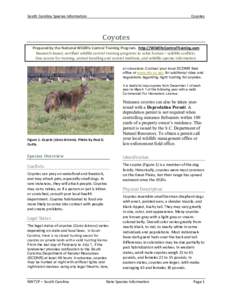<--- Back to Details
| First Page | Document Content | |
|---|---|---|
 Date: 2014-08-25 13:39:07Wolves Canid hybrids Coyote Coyotes Gray wolf Trapping Fence Hunting Urban coyote Coyote attacks on humans |
Add to Reading List |
| First Page | Document Content | |
|---|---|---|
 Date: 2014-08-25 13:39:07Wolves Canid hybrids Coyote Coyotes Gray wolf Trapping Fence Hunting Urban coyote Coyote attacks on humans |
Add to Reading List |